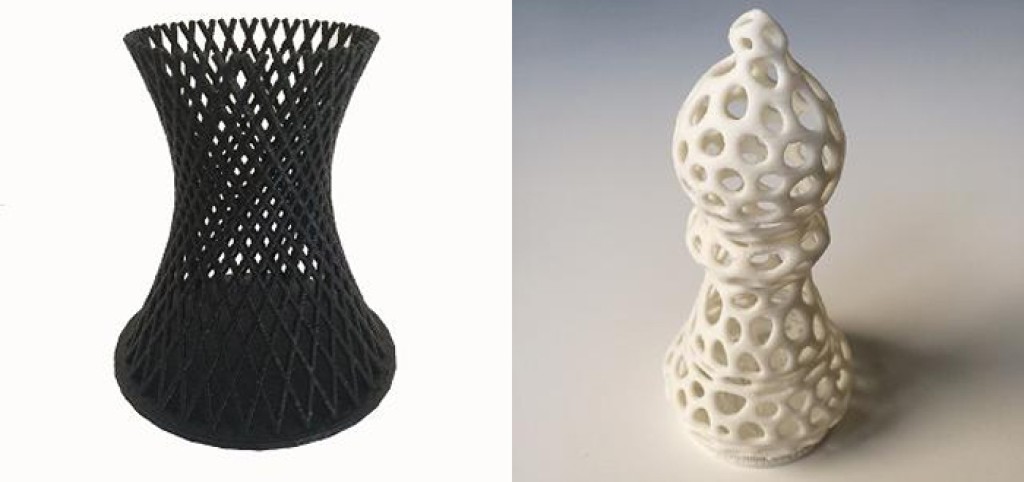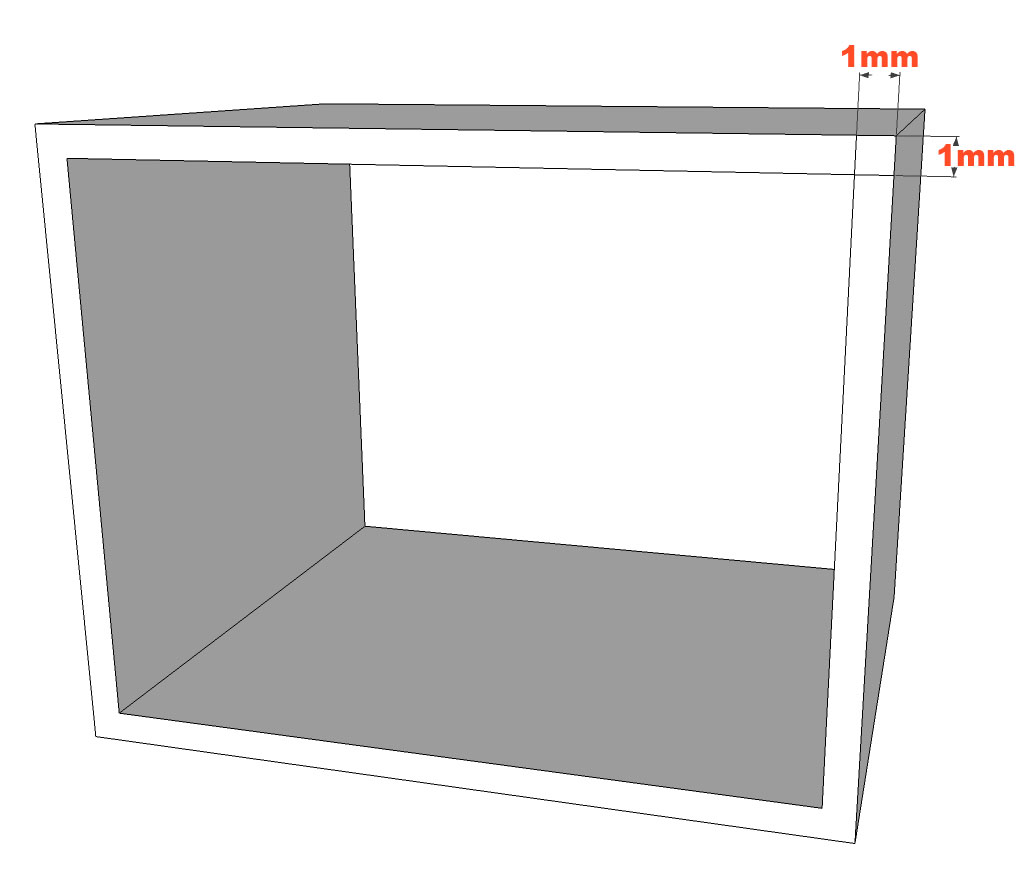3D PRINTING MATERIALS
Fused deposition modeling - FDM
FDM - Fused Deposition Modeling
Fused deposition modeling (FDM) additive manufacturing technology

3D printers based on FDM technology manufacture parts layer by layer by heating the thermoplastic material to a semi-liquid state and extruding it in accordance with the computer controlled course.
For manufacture, FDM technology uses two materials : a modeling material , which constitutes the finished piece , and a support material, in lieu of reinforcement.
The filaments of material are sent from a reel towards the print head , which moves along X and Y coordinates , depositing the material to achieve each layer before the base from moving downward along the Z axis and that the next layer begins.
When the 3D printer has realized the manufacture , the user detaches the carrier material or dissolved in detergent and water. The part is then ready for use .
Thickness minimum of walls

Minimum wall thickness for assembled walls: 1mm

Materials in FDM
Material ABS:
Examples of areas of application:
The strength of the ABS material is 80% similar to that of an injection cast ABS, so it is suitable for functional applications.
Characteristics:
Appearance of stratifications.
Advantages:
Reliable and robust functional prototypes.
Material ABS-PC (polycarbonate):
Technical and robust thermoplastic.
Examples of application:
Used for functional prototyping, tools which requires excellent shock resistance.
Characteristics:
This material has the features of two excellent FDM thermoplastics: the robustness and heat resistance of the PC and the flexibility of the ABS.
Advantages:
Reliable and robust functional prototypes.
Material Ultem Black:
Allows to print parts with thermal properties.
Examples of application:
This material is ideal for aerospace, automotive and military applications due to high strength/weight ratio and certifications.
Characteristics:
This material has complete thermal, mechanical and chemical properties.
Advantages:
Functional prototypes.
 FRA
FRA ESP
ESP ENG
ENG